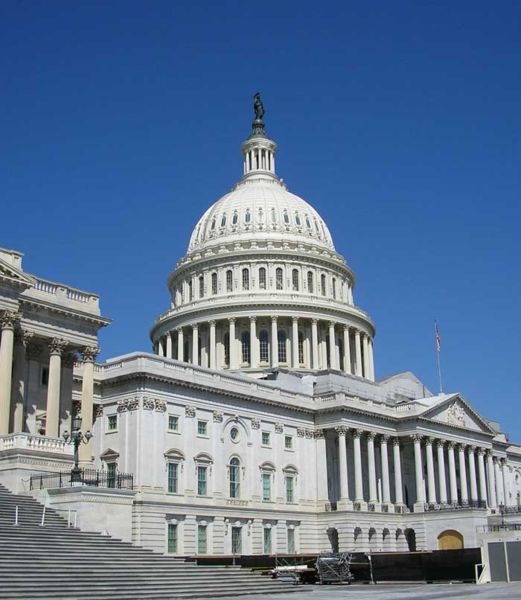House leaders have reportedly reached a tentative deal on a climate and energy bill — and in the absence of details, speculation is rampant about how the bill has been weakened or otherwise changed.
Energy and Commerce Committee Chair Henry Waxman (D-Calif.) and Ed Markey (D-Mass.), the bill’s coauthors, had wanted to start markup of the legislation two weeks ago, with the aim of passing it out of committee by Memorial Day. But it’s taken longer than expected to reach agreement with moderate Democrats, who requested a lot of changes to the bill.
Democrats on the Energy and Commerce Committee are scheduled to meet Tuesday night to hammer out the final details; then text of the revised bill is expected to be unveiled on Wednesday, and debate is to begin on Thursday.
While the bill’s authors have been mum about the negotiations, their moderate counterparts have made a number of claims about what will be in the bill.
Rep. Mike Doyle (D-Pa.) told Reuters late last week that the bill would give away the majority of carbon permits for “the first 10 to 15 years,” rather than requiring emitters to pay for the right to pollute. Doyle and others have indicated that local electricity distribution companies would be given 35 to 40 percent of the permits, while roughly 15 percent would go to trade-exposed, energy-intensive industries like steel, paper, and cement, and up to 5 percent would go to refineries.
Informed sources on the Hill tell Grist that Doyle may be jumping the gun in claiming those decisions are final. But there is a lot of pressure from utilities, energy-intensive industries, and their sympathetic representatives to hand out a majority of the permits free of charge in the early years of the program. Waxman has acknowledged that to get the bill passed, some free permit allocations may be necessary, and would be reduced over time.
The near-term target for cutting emissions may be lowered in the new version of the bill, to 14 percent below 2005 levels by 2020. The original proposal called for a 20 percent cut, but some were lobbying to go as low as 6 percent. Waxman balked at the 6 percent suggestion: “I think it is very low,” he told reporters several weeks ago.
The 14 percent cut is at the low end of what the U.S. Climate Action Partnership proposed in its blueprint, which served as a model for the Waxman-Markey bill.
The target for cutting emissions by 2050 is likely to remain as it was in the original draft: 83 percent below 2005 levels.
The bill’s renewable electricity standard is another component that may be weakened. The draft called for 25 percent of each state’s electricity to come from renewable sources by 2025. Southeastern Democrats were unhappy with that, so committee leaders are reportedly considering lowering the mandate to 17.5 percent, and could allow a portion of that to be met by efficiency measures.
Drill, maybe, drill?
Another bargaining chip with moderate Democrats might be offshore oil and gas drilling.
The Democratic-controlled Congress let the moratorium on offshore drilling expire last October, responding to public outrage over $4-a-gallon gasoline and the Republicans’ “drill, baby, drill” chant. (Never mind that experts agree that more domestic drilling wouldn’t do anything to lower oil costs in the near term.) Obama changed his tune on the issue while campaigning last year, saying he’d be open to more offshore drilling if it were part of a comprehensive energy plan.
Now the White House is floating the possibility of a “grand bargain” that would lump some expanded domestic oil and gas drilling in with broader climate and energy policy. A senior White House official told The New Yorker that the administration was exploring a deal that would include a cap-and-trade system and “serious” and “short-term” increases in domestic oil production in places like the California coastal region. House Democrats who met with Obama in the White House last week said the subject came up.
It’s a plan that many enviros — and many Californians — wouldn’t be too fond of, but it could bring moderate Democrats on board. It would also defuse the Republican talking point that Democrats are opposed to all drilling.
Such a deal could also help put in place new protections for the coasts. Now, in the absence of an offshore-drilling moratorium, the federal government could technically offer drilling leases for areas as near as three miles to shore. Interior Secretary Ken Salazar scrapped the Bush administration’s lease plan in January, but said the Obama administration is open to drilling in some areas and would work with Congress to craft “a plan that makes sense.”
The offshore-drilling issue would be handled by the House Natural Resources Committee, however, not the Energy and Commerce Committee, which is working on the climate bill, so additional deal-making would be needed to get everything into a single package.
Through all this, Waxman is sticking to his self-imposed deadline for passing the climate and energy bill out of committee before Congress leaves for its Memorial Day recess, but that’s looking less and less likely as the holiday approaches.




